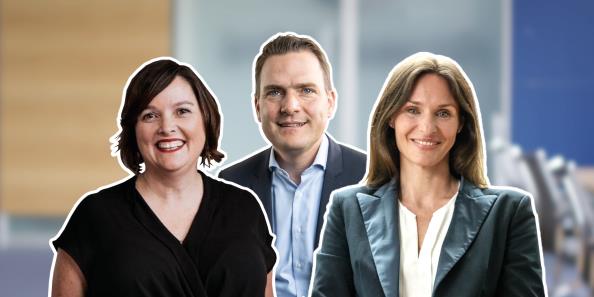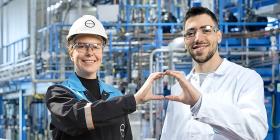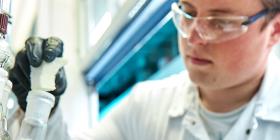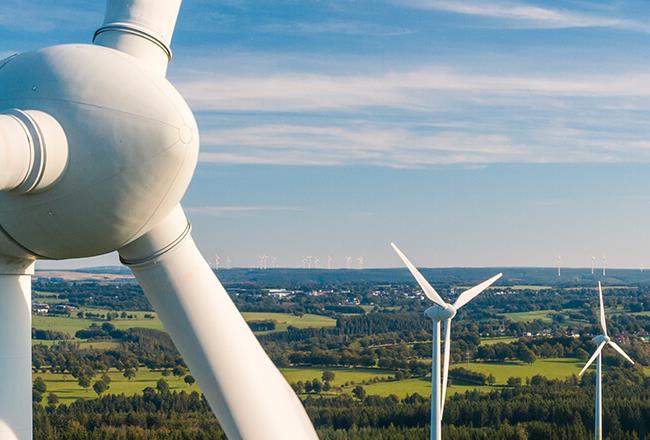
Renewable Energy – Pillar of the Circular Economy
Covestro is gradually converting its production locations around the world to renewable energies. The company is especially counting on direct long-term supply agreements for wind and solar power with major energy providers. Overall, Covestro wants to cover 100 percent of its energy needs with renewable sources and reduce its greenhouse gas emissions from purchased energy to net zero by 2035.
Green energy direct from the source
Covestro signed its first direct agreement with Ørsted in Germany in 2019, in what was then the world's largest supply contract for offshore wind energy. From 2025, the Danish energy provider will deliver green electricity for ten years, which will be generated in a newly built wind farm in the North Sea. The capacity is one hundred megawatts – enough to cover the electricity needs of 300,000 people.
Covestro has signed similar agreements for its factories in Europe and Asia; most recently for the locations in Baytown on the Gulf of Mexico and in Antwerp, Belgium. The company also sees such direct agreements as a tool for promoting the energy transition worldwide. In 2023, the company was already covering around 16 percent of its global energy demand from renewable sources, up from twelve percent in the previous year.
Making Production Energy Efficient
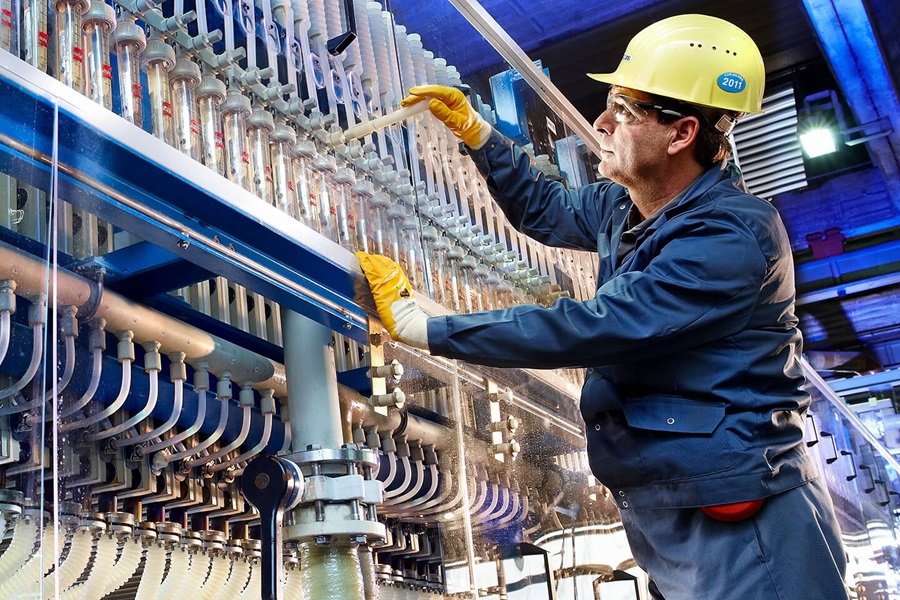
Covestro uses the latest advancements in technology to optimize its production processes and use energy as efficiently as possible, which according to the International Energy Agency (IEA) can contribute to reducing greenhouse gas emissions by more than a third.
Covestro relies for example, we rely on an innovative energy management system that can be used to optimize our production facilities' energy usage. Another example of a technological breakthrough is the introduction of an electrolysis process co-developed by the company, which reduces the amount of power required for manufacturing the important base chemical chlorine by 25 percent. This innovative technology has been used on a large scale at the production site in Tarragona, Spain since 2023. By 2023, Covestro was able to increase its overall energy efficiency by 40 percent compared to the reference year 2005.
The company sees also room for improvement to reduce greenhouse gas emissions in the process of manufacturing isocyanate, one of the central components for polyurethane foam. The emission of laughing gas in this process can be reduced by an innovative catalysis technology.
Support renewable energies
Covestro not only uses renewable energies but also drives their development with innovative materials and solutions. For example, the company has developed a synthetic resin that makes the production of wind rotors more efficient and increases their performance. Covestro also offers elastomers for coating solar modules, which protect against wind and weather and reduce maintenance costs.








